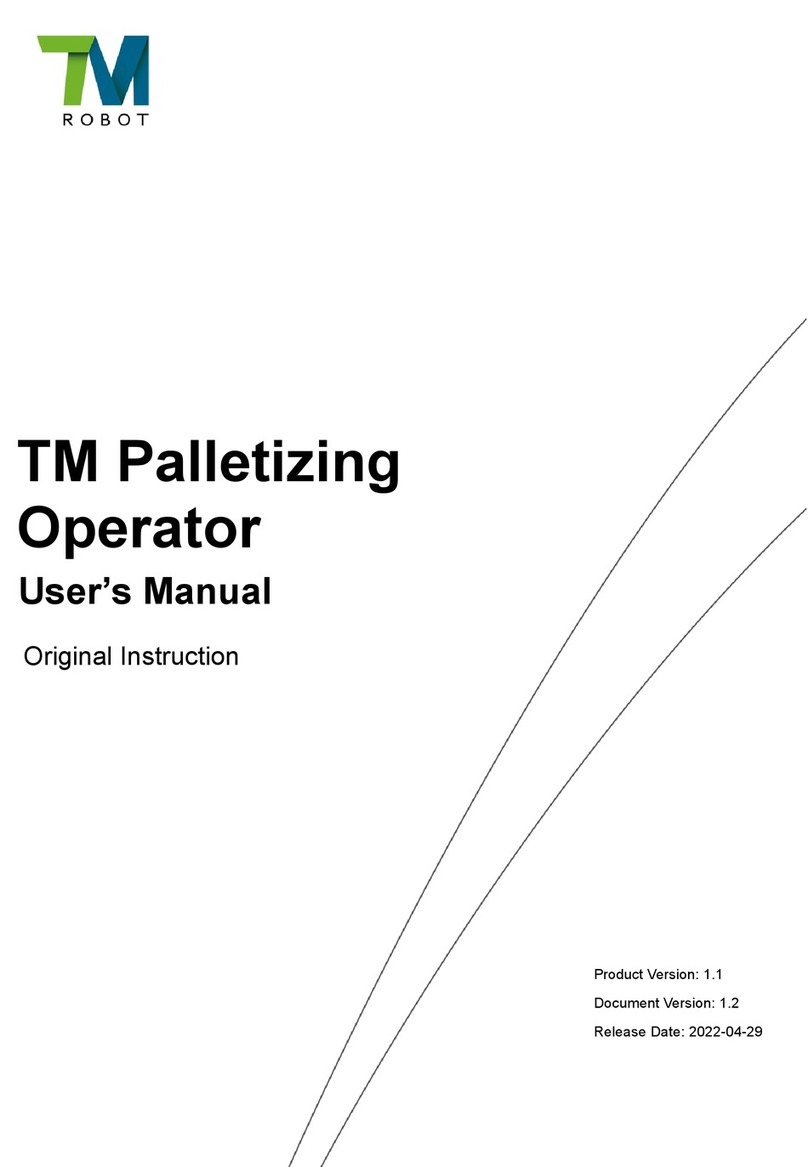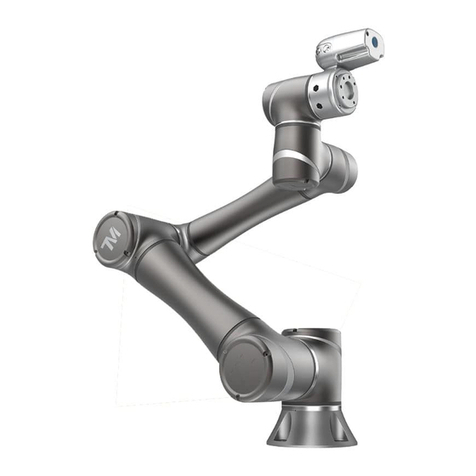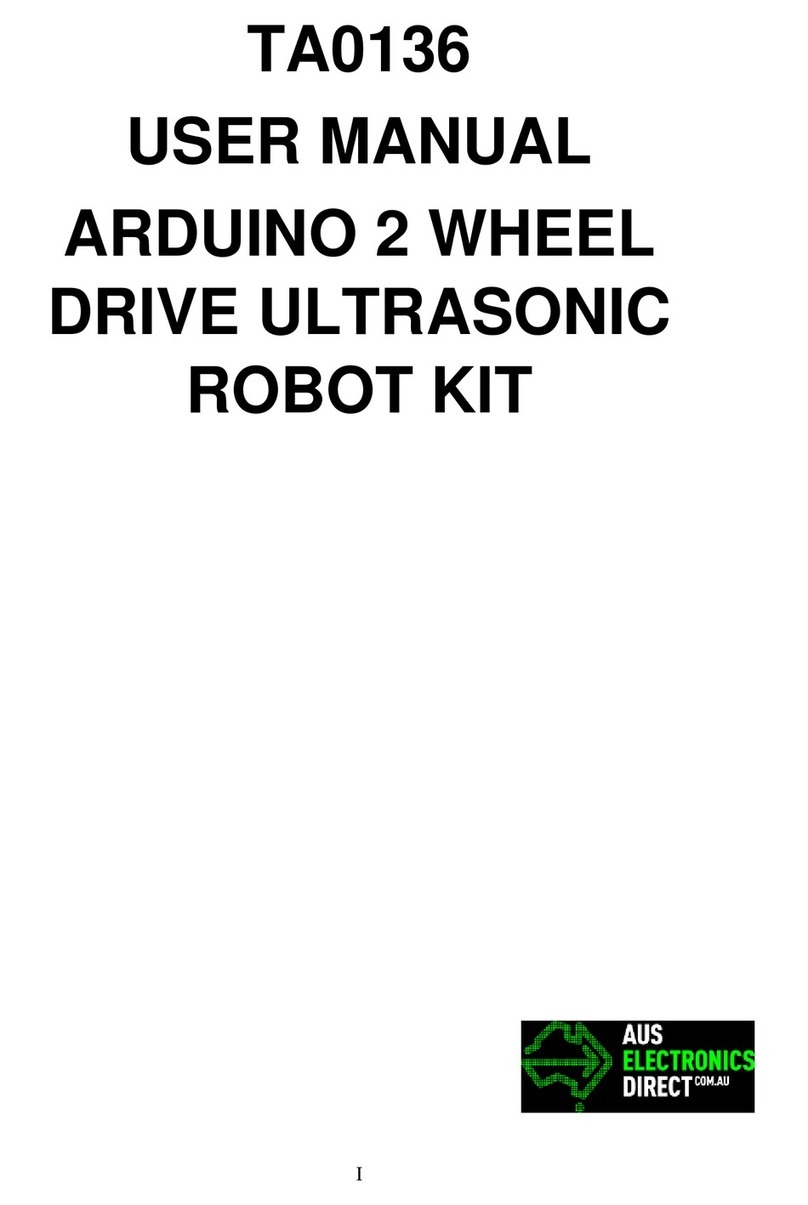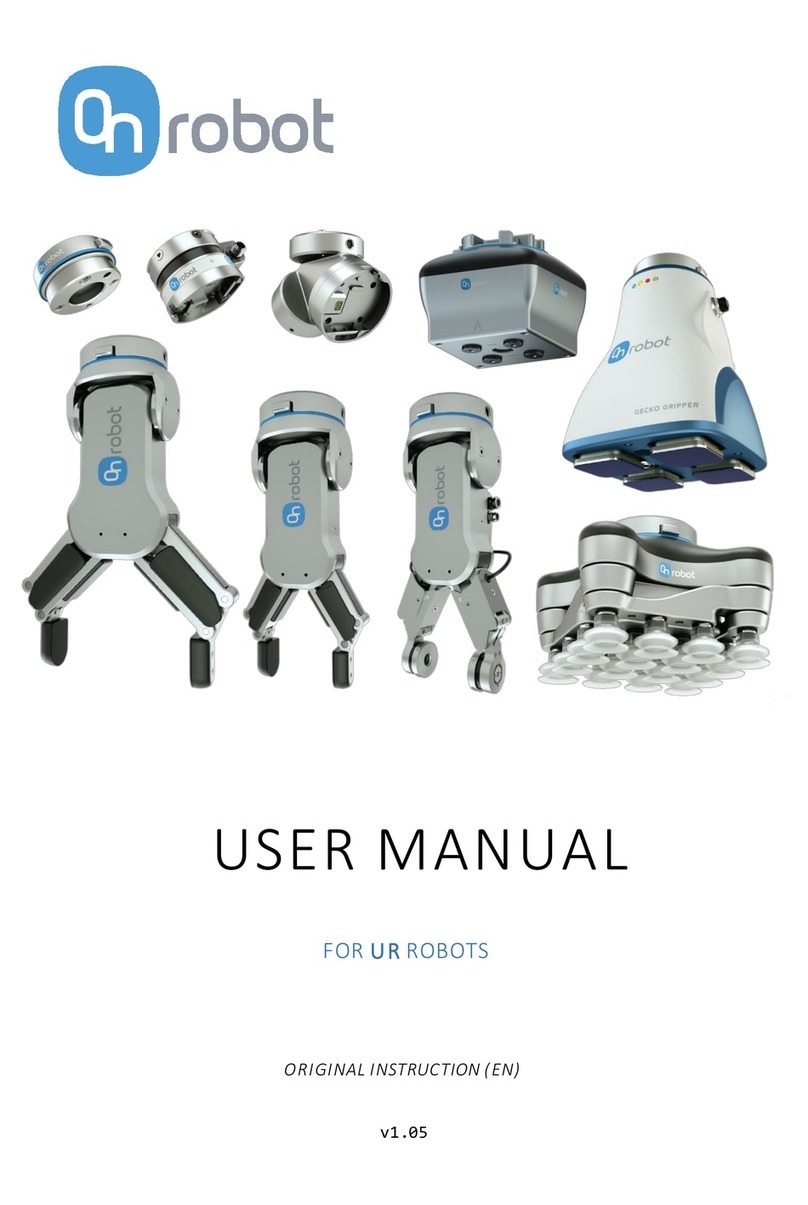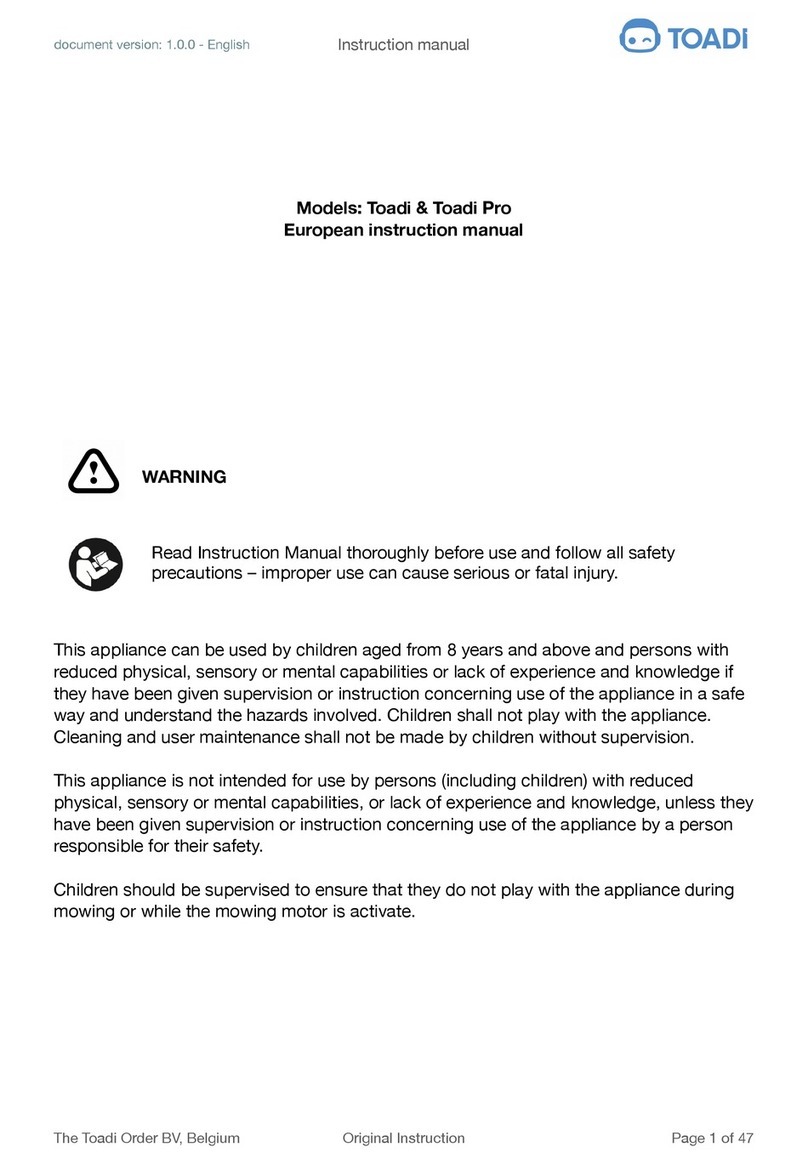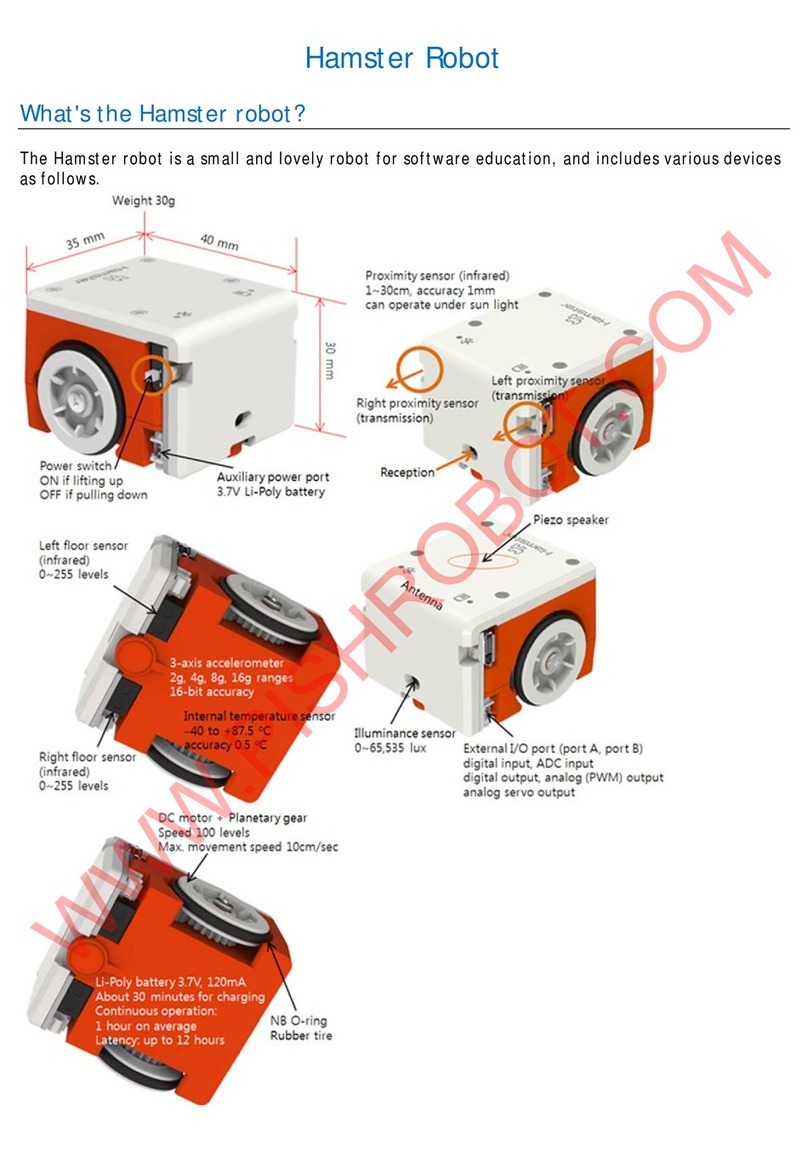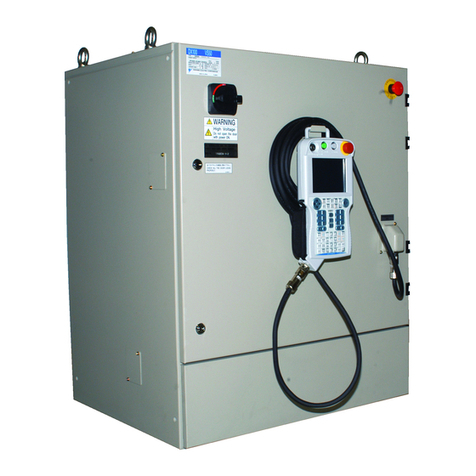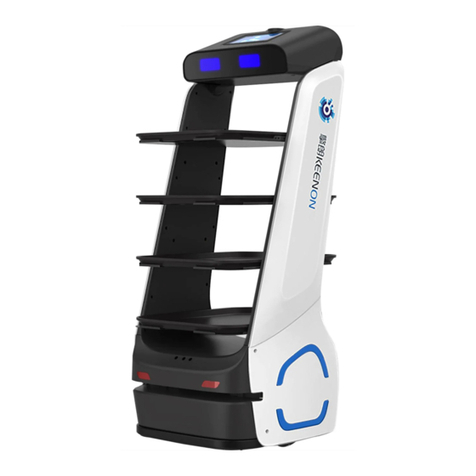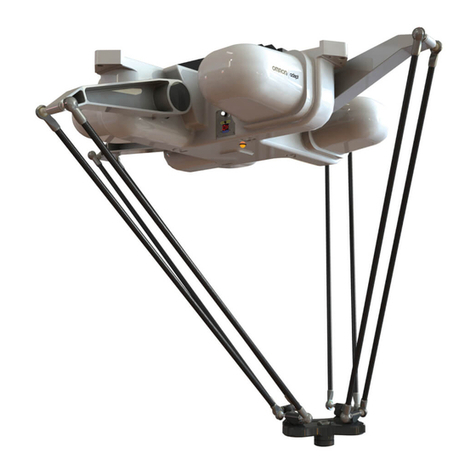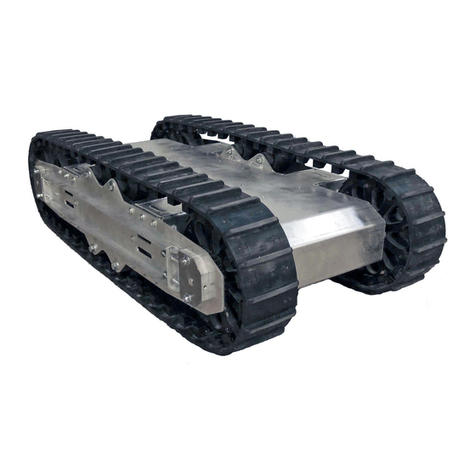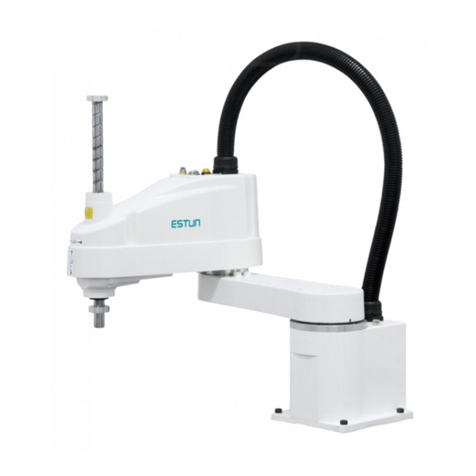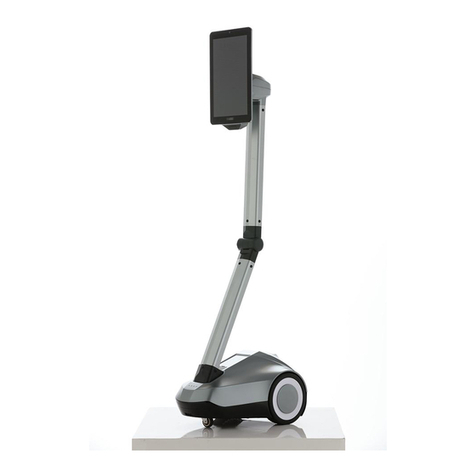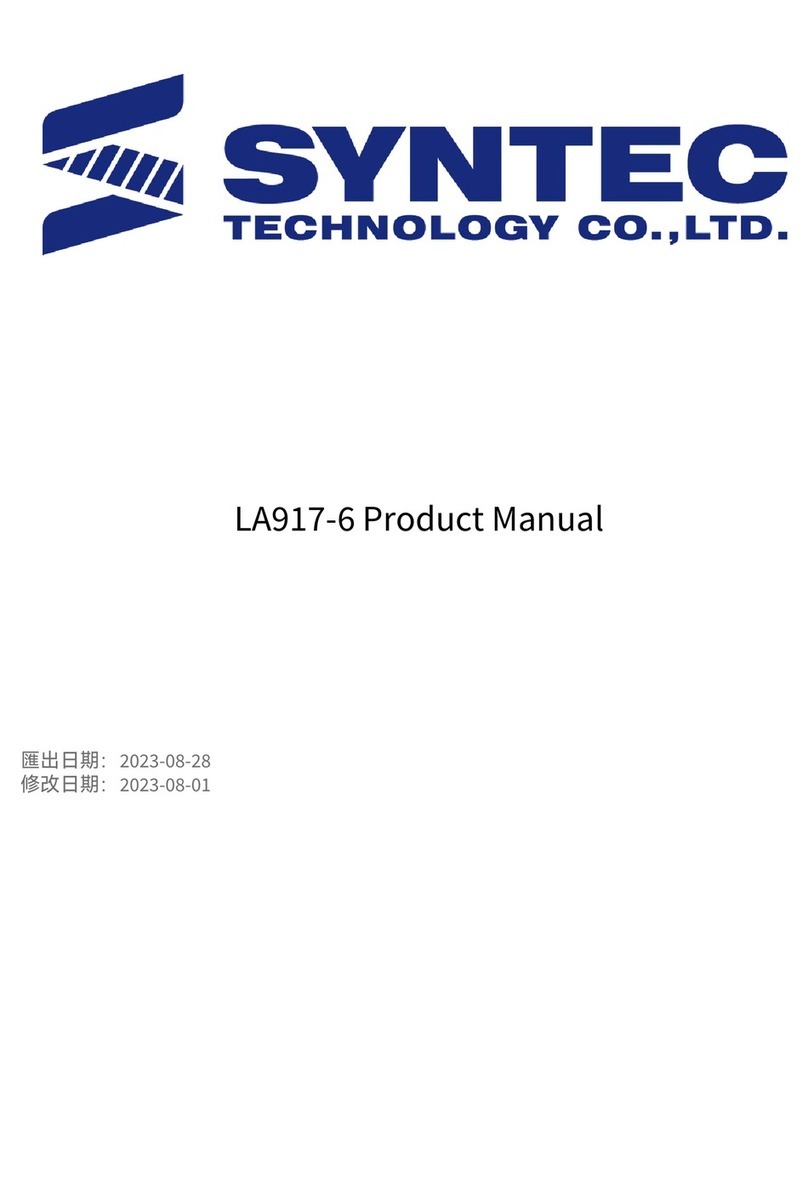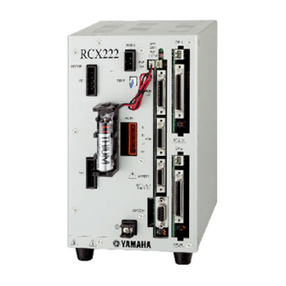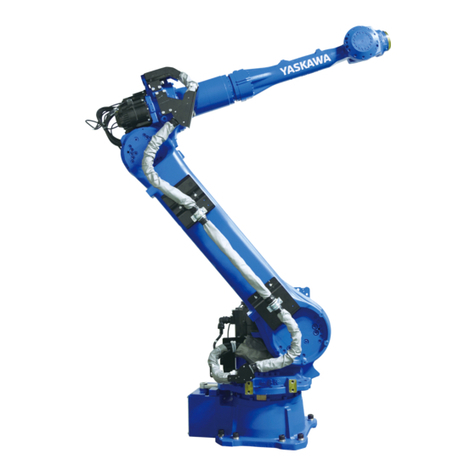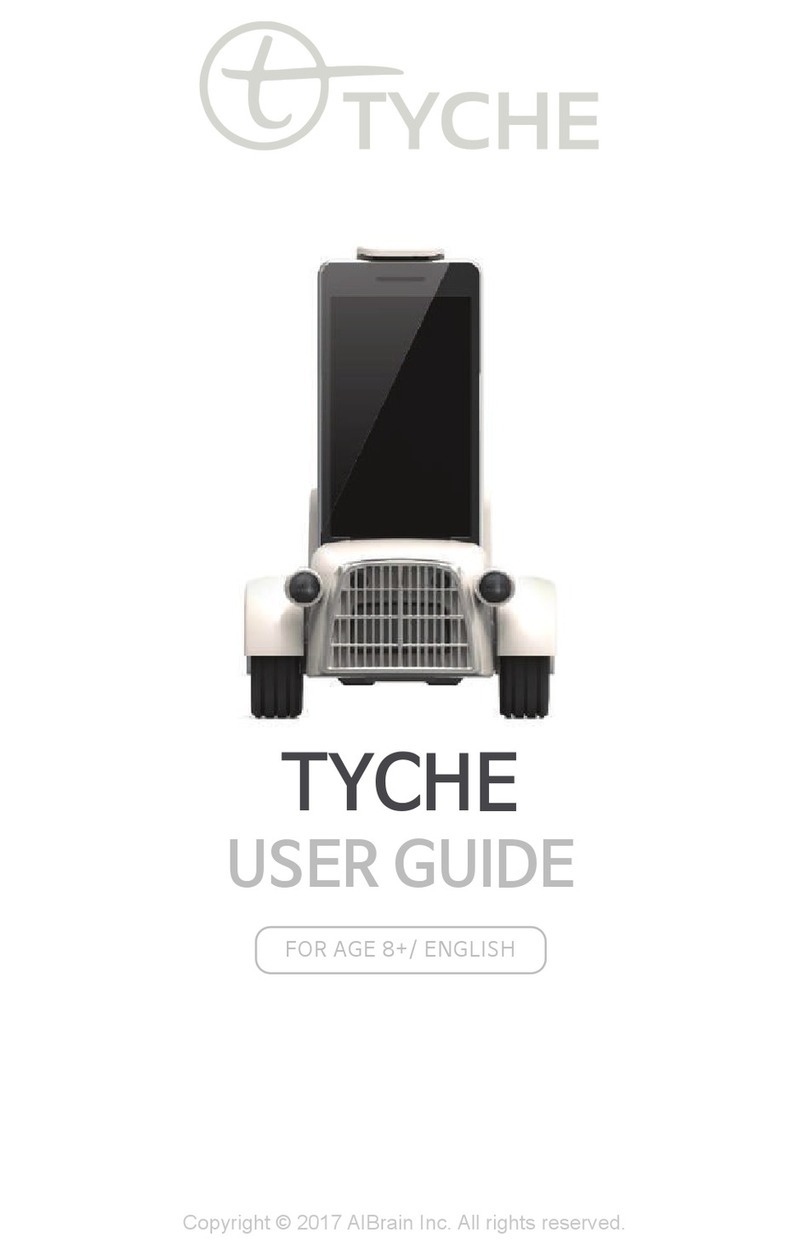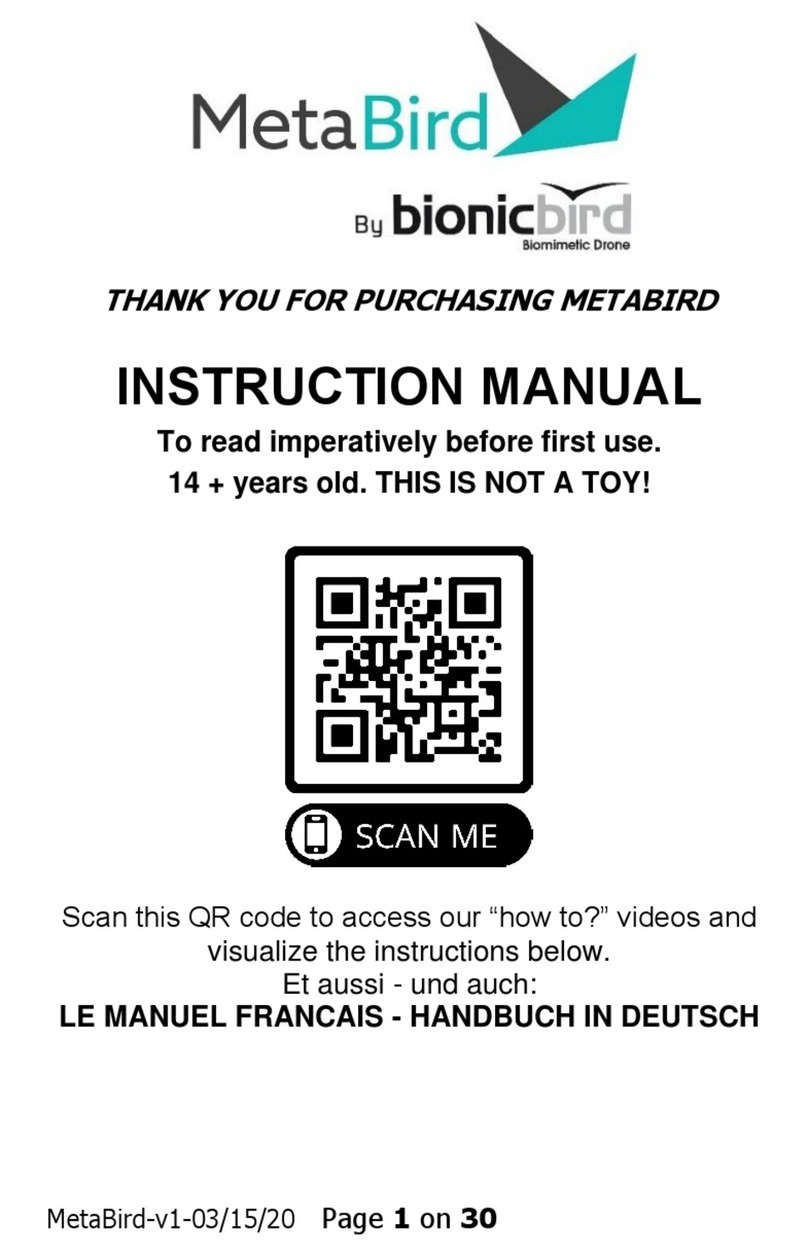Techman Robot TM5 Series Manual

TM5
Guide Book
Hardware Version: 1.00
Software Version: 1.62

ii Release Date : 2018-01-10

iii
The information contained herein is the property of Techman Robot Corporation (hereinafter referred to as the
Corporation). No part of this publication may be reproduced or copied in any way, shape or form without prior
authorization from the Corporation. No information contained herein shall be considered an offer or commitment.
It may be subject to change without notice. This Manual should be reviewed periodically. The Corporation will not
be liable for any error or omission.
and logos are the registered trademark of TECHMAN ROBOT INC. and the company reserves the
ownership of this manual and its copy and its copyrights.

iv

v
II Quick Guide
1. Overview
1.1 Overview
2. Unboxing
2.1 Carton Types
2.2 Contents of Each Carton
2.3 Installing Your Robot
2.3.1 Remove the Control Box
2.3.2 Verification Before Removal of the Robot Arm
2.3.3 Removal of the Robot Arm and Tightening
2.3.4 Connect the Robot and Control Box
2.4 Bootup
2.4.1 Connect to Power Supply
2.4.2 Booting from the Packaging State
2.4.3 Normal Bootup
2.4.4 Operation of HMI TM Flow of TM Robot
2.4.4.1 Local Operation Instructions
2.4.4.2 Wireless Connection Method
2.4.4.3 Physical AP Connection Method
2.4.4.4 Wired Connection Method
2.4.5 Initial Settings
2.5 M/A Mode and Hand Guide
2.6 Create and Run Your First Project
2.7 Shutdown
2
2
3
5
5
6
6
6
7
7
7
11
13
13
15
19
22
23
26
27
35

1
IIQuick Start
Hardware Version: 1.00
Software Version: 1.62

II Quick Guide 1. Overview2
1. Overview
1.1. Overview
These instructions guide the user of the Techman Robot through the boot process for the first time. The
user must thoroughly read and understand Volume 1 "I. Hardware Setup Instructions" before performing the
operations of this Chapter. Otherwise, failure to do so may cause serious danger.
The subsequent chapters of this guide will describe how to install the Techman Robot. If this is your
first time using the Techman Robot, but the robot is not newly unpacked from the carton,especially
when the robot has been installed in the working environment, follow the following instructions to per-
form installation and initial boot according to this Guide:
1. To avoid changes to the original working environment and settings, resulting in risks when returning
to work, verify and retain all necessary setting records together with the person responsible for the
working environment, such as software settings and all hardware wiring.
2. Remove all of the control box's external I/O connections including the analog I/O, EtherCAT port and
network port.
3. Remove all of the control box's connections to external devices / external storage devices through
USB interface, Serial port, and network interface.
4. Unload any object/end effector attached to the end flange, and any electrical connection between
the end effector and end module / control box of the robot.
5. Unload any hardware attached to the robot arm.
Warning
2. Unboxing
2.1 Carton Types
The Techman Robot product is packed in 2 cartons: the robot arm carton and the control box carton, as
shown below:
Robot arm carton

II Quick Guide 2. Unboxing 3
Control box carton:
2.2 Contents of Each Carton
Each carton has the following contents. Please check them when you unpack the cartons for the first time. If
any item is missing, contact your vendor.
The robot arm carton contains:
Robot arm

II Quick Guide 2. Unboxing4
The control box carton contains:
Control box
Calibration Plate
IO cables
TM Landmark
(Contains one large and one small
calibration plate)
*The Calibration Plate are only included
with TM robots fitted with the hand-
eye camera. No Calibration Plate are
included with the following series:
TM5X-700/TM5X-900
(2 packs)
(Contains two TM Landmark)
*The TM Landmark are only included
with TM robots fitted with the hand-
eye camera. No TM Landmark are
included with the following series:
TM5X-700/TM5X-900

II Quick Guide 2.3. Robot Installation 5
2.3 Installing Your Robot
The Techman robot arm cannot stand independently after being removed from the carton. Therefore,
prepare the mounting base with the corresponding holes as described in Subsection 4.2.1.2 "Robot Arm
Mounting" of Volume 1 "I. Hardware Setup Instructions" in advance. Then follow these instructions to install
the robot.
2.3.1 Remove the Control Box
After checking the contents, remove the contents in order and perform installation.
Control box carton:
- Remove the Calibration Plate
- Remove the power cable of the control box
- Remove the control box
- Connect the power cable to the control box
- Place the control box near the robot base
At this stage, do not connect the power cable of the control box to any electrical outlet, or it may
cause equipment damage.
At the installation site, at least two people should simultaneously perform installation of the robot,
otherwise you risk robot arm damage or personal injury. Do not install the robot alone.
Warning
Note
Power cable of the control box
(1 cable)
Ground Wire
(1 pack)
*After S/N AC174901, ground wire
would be provided along the delivery.

II Quick Guide 2.3. Robot Installation6
2.3.2 Verification Before Removal of the Robot Arm
The Techman robot arm cannot stand independently after being removed from the carton. Place the
four (4) screws (M10 *4) used to attach the robot to the base near the robot base in advance. If the
base is designed with corresponding pinholes, mount them to the base.
2.3.3 Removal of the Robot Arm and Tightening
At least two people should remove the robot arm from the carton. For the correct holding positions,
follow the Chapter 3 "3. Transportation" of Volume 1 "I. Hardware Setup Instructions" in this Guide.
Place the robot on the mounting base. If it is designed with connection pins, align the pinholes of the
robot base module. Tighten the four locking screws for the robot base module diagonally in order.
Follow the tightening torque recommended in Subsection 4.2.1.2 "Robot Arm Mounting" of Volume "I.
Hardware Setup Instructions."
2.3.4 Connect the Robot and Control Box
Connect the power cables of the robot arm and the control box to the control box to boot up the
controller.
Power cable of the control box
Power cable of the robot arm
Warning
When the robot is installed to the base, make sure two people work together to install it. If it is
designed with pinholes, pay attention to your safety to avoid pinching. If you do not have connec-
tion parts at hand, such as the connecting pins, screws, do not leave the robot without completely
tightening it (for example, the 4 sets of screws are not completely tightened). One person should
continuously support the robot arm while the other person goes to get required parts. Otherwise,
falling of the robot arm may result in equipment damage or personal injury.

II Quick Guide 2.4. Bootup 7
2.4 Bootup
2.4.1 Connect to Power Supply
Connect the power plug from the control box to the power socket.
2.4.2 Booting from the Packaging State
Location of status lights
All three status lights are now flash-
ing.
Step3
Step2
Press the Emergency Switch on the
Robot Stick.
Step1
Press the Power button on the Robot
Stick to activate the robot. The three
status lights on the Robot Stick will be-
gin flashing.

II Quick Guide 2.4. Bootup8
Step5
Step4
The robot status light will flash red while
the Controller is booting.
The Robot indication light ring will flash
light blue light while controller has fin-
ished booting.

II Quick Guide 2.4. Bootup 9
Step6
Hold down the FREE button and guide the robot to the safe-
ty position as shown.
Safety position for TM5X-700/TM5X-900 models

II Quick Guide 2.4. Bootup10
Step7
Release the Emergency Switch on the
robot stick clockwise and the indication
light ring of the robot lights up solid
blue. At this time, you can control the
robot normally.
If you do not guide the robot to the safe postition as shown above, and then release the
Emergency Switch, some axis (especially the Axis 5) may be beyond the angular limit of the joint
when the robot returns to normal status. At this time, the robot cannot return to normal and a
red light turns on. In this case, press the Emergency button again and repeat this step to get the
safe position shown in the diagram.
Note
When the boot is completed from the packaged position, Please use the TM Flow controller
page to move the robot arm to the home point ( Joint angle of each axis: 0, 0, 0, 0, 0, 0), and
you can move the robot arm to normal position by hand guide( Joint angle of each axis: 0, 0, 90, 0,
90, 0) , As shown below.
Note

II Quick Guide 2.4. Bootup 11
2.4.3 Normal Bootup
Step3
Step2
Step1
Press the Power button on the robot
stick to activate the robot
Make sure the Emergency Switch on
the Robot Stick is released.
Make sure the robot is in a safe posi-
tion

II Quick Guide 2.4. Bootup12
Location of status lights
Step4
Make sure the small display shows Boot Mode and
the lights on the Robot Stick are flashing.
Step6
Step5
The Robot Indication Light Ring will flash red while
the Controller is booting.
Once the controller has finished booting, the Robot
Indication Light Ring will glow a constant blue. The
robot can now be used normally.

II Quick Guide 2.4. Bootup 13
2.4.4 Operation of HMI TM Flow of TM Robot
For TM Robot, there are three ways to launch HMI TM Flow: Local operation method - Connect the
monitor, keyboard, and mouse to the control box to launch TM Flow. Or go to the Customer section
on the official website and download TM Flow Client. Install it in a Windows computer (such as
Windows laptop / Windows tablet) and connect it to the robot through wired or wireless connection.
You can choose one of the methods for operation:
2.4.4.1 Local Operation Instructions
Step1
Connect the monitor, keyboard, and mouse to the control box.
Step2
Click the icon at the top left corner of the HMI to bring up the menu. Click to
login.

II Quick Guide 2.4. Bootup14
Step3
No password is set by default for "Administrator." Confirm to login directly.
Step4
Select "Get Permission" to get control of the robot.

II Quick Guide 2.4. Bootup 15
Install the client-side HMI system.
Step1
Step2
Connect the client-side wireless network to the robot's Soft AP. The SSID is
the serial number on the Controller.
2.4.4.2 Wireless Connection Method
Connecting via Wi-Fi on
a tablet
Soft AP
Other manuals for TM5 Series
1
Table of contents
Other Techman Robot Robotics manuals
